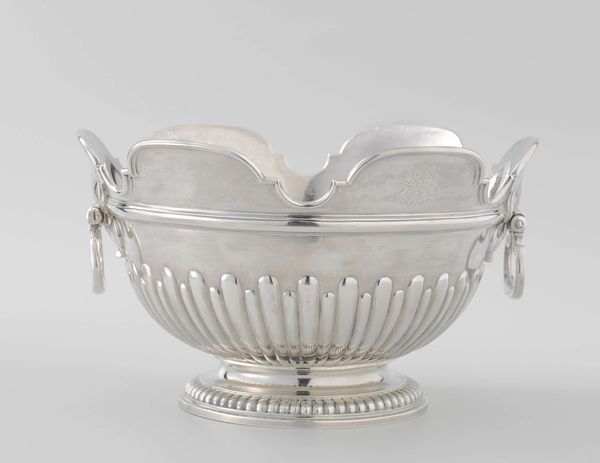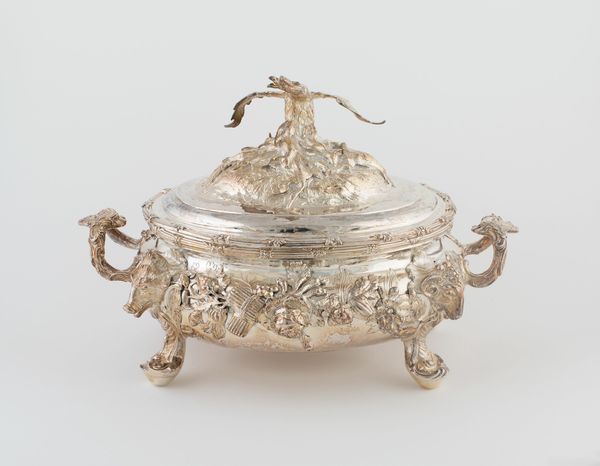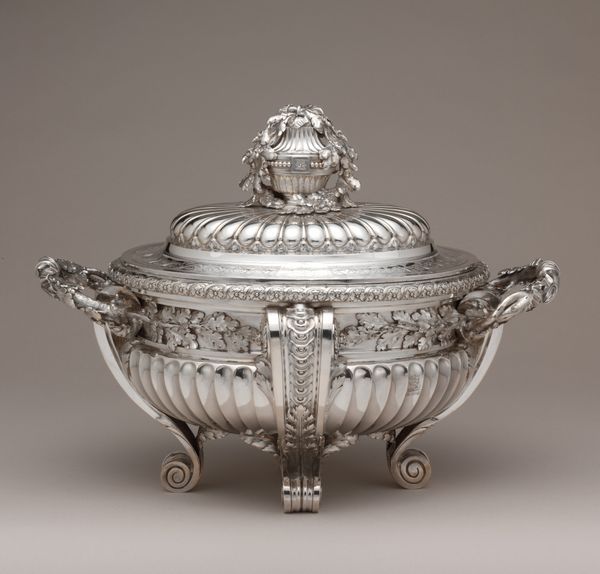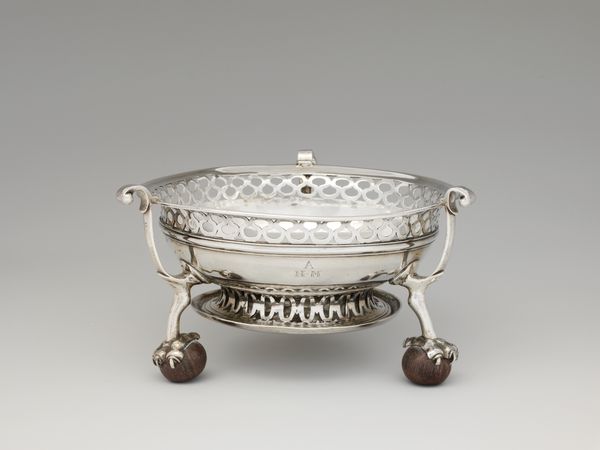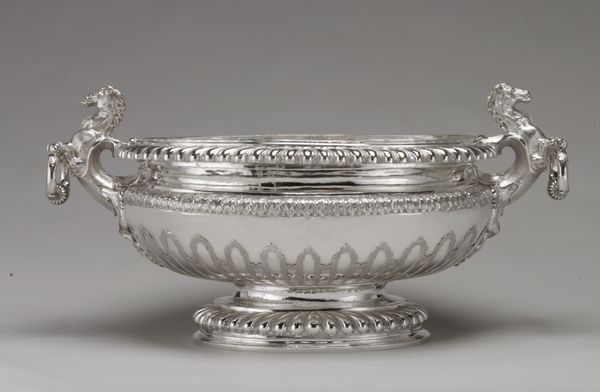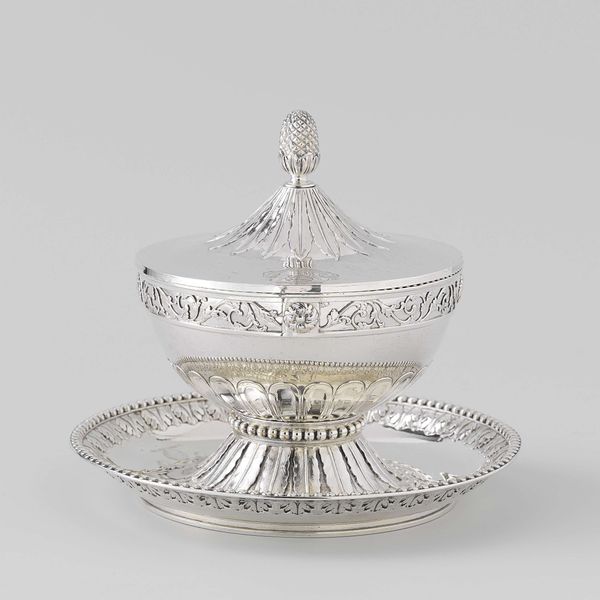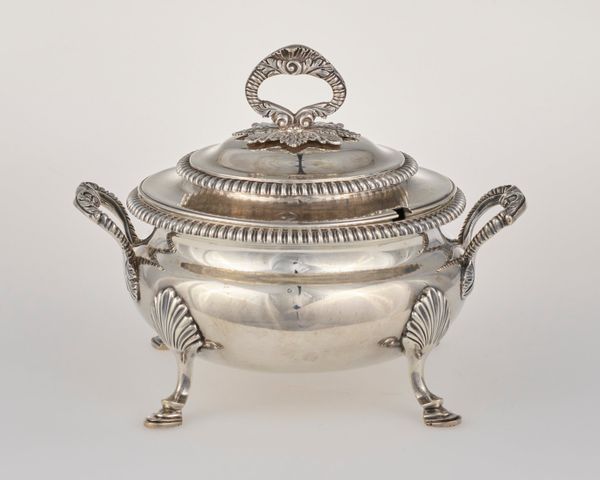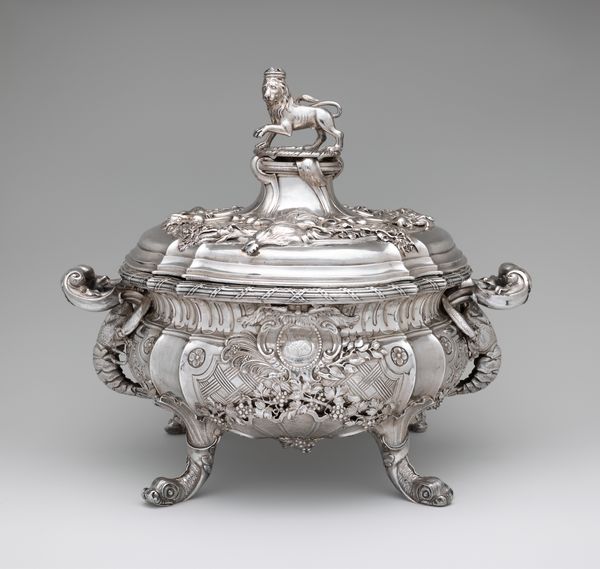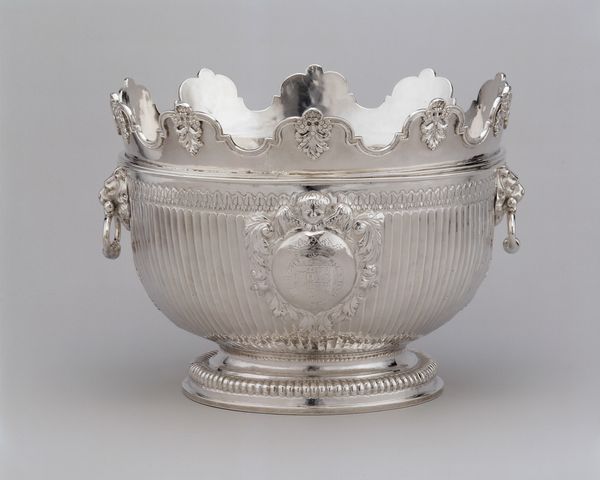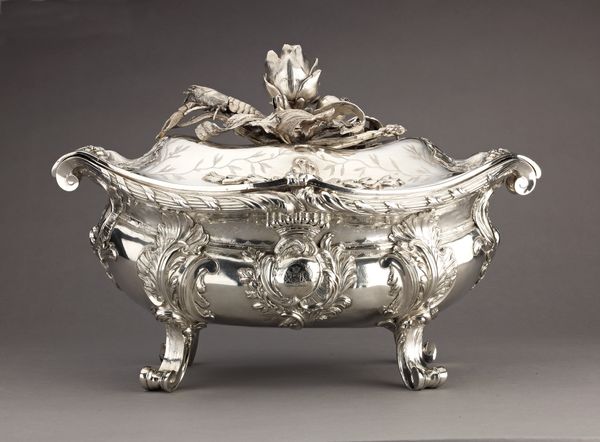
Een grote (A) en twee kleine (B en C) ovale terrines in Lodewijk XVI-stijl 1773
0:00
0:00
Dimensions: height 18.0 cm, width 28.7 cm, depth 17.7 cm, width 18.0 cm, depth 13.0 cm
Copyright: Rijks Museum: Open Domain
Editor: We’re looking at a set of silver terrines in the Louis XVI style, made in 1773 by Philippus Priee. The craftsmanship seems exquisite! There’s so much detail in the curves, the finial, and the engraved designs. What compositional aspects strike you? Curator: Notice how the ovoid shape repeats itself from the body of the terrine to the lid. Also observe the strategic placement of linear motifs. The lines, whether incised, cast, or implied by a garland, contribute to a complex visual rhythm that keeps the eye engaged and moves us through each piece, does it not? Editor: I see what you mean. The garland dips and the lines along the lid are really deliberate and measured. It feels…balanced, even with all the ornamentation. But is there some element of Rococo that can be appreciated in this later Louis XVI silverwork? Curator: Indeed. Rococo revels in asymmetry, which we glimpse here. Though fundamentally symmetrical in form, each piece features varied surface decorations to disrupt predictability. Also the sinuous lines in the handles reflect Rococo, but their curvature is now governed by the stricter geometric ideals of the incoming neoclassical style. Consider how these aspects complicate a single interpretation, and also complicate history itself. What is revealed with a shift of perspective? Editor: That makes so much sense. I didn't consider asymmetry to be a fundamental trait of Rococo. It is amazing how this reflects a turning point in styles! Curator: Precision in design demonstrates exceptional artistry and aesthetic principles that reflect an era defined by lavishness, balance, and careful decoration. This fusion creates a very interesting experience. Editor: Right! Thank you, I never would have caught that on my own. Curator: Of course. My pleasure.
Comments
No comments
Be the first to comment and join the conversation on the ultimate creative platform.
